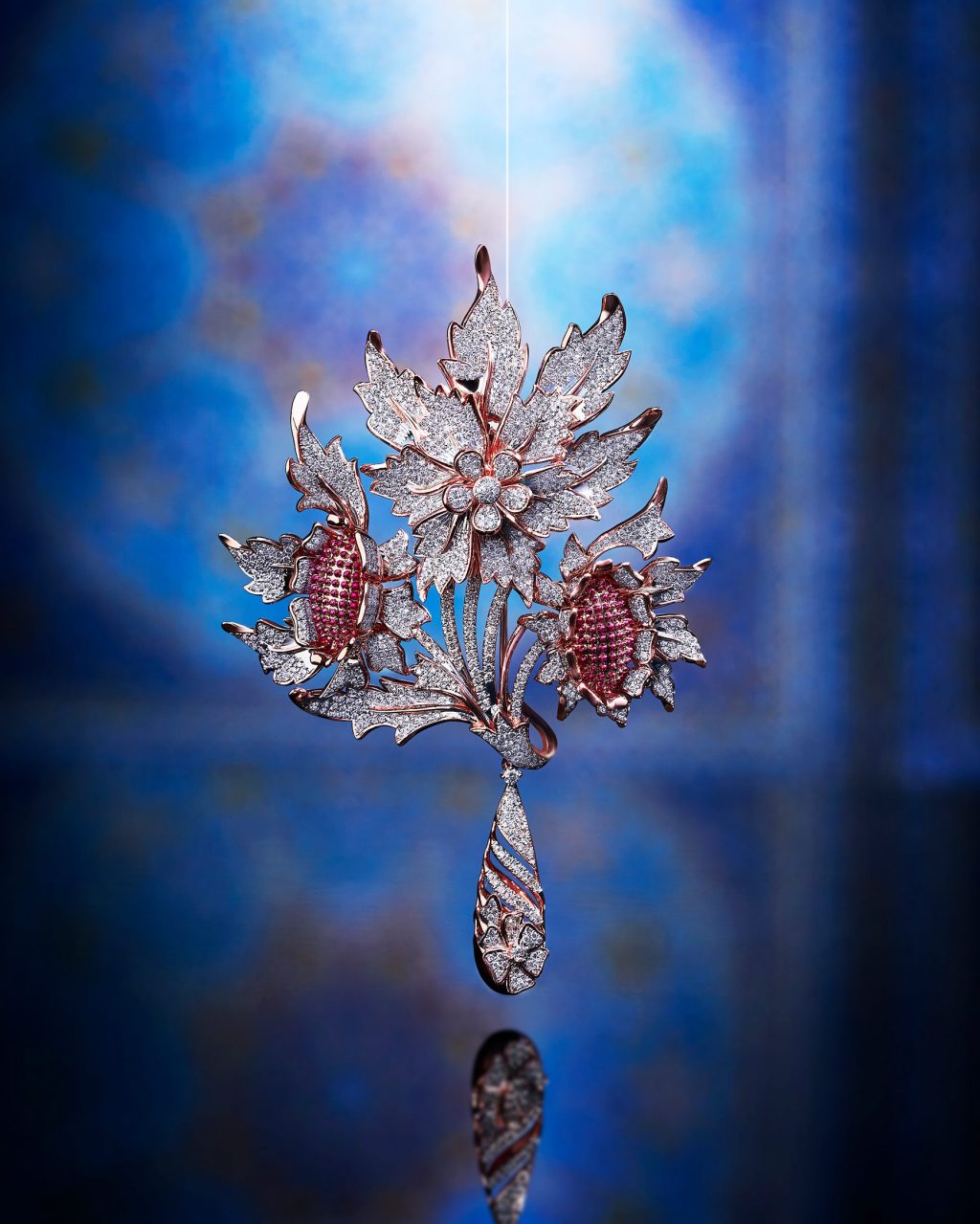Not Set in Stone
Everyone wants a piece of Studio Renn. Meet the maverick duo shaking up the jewellery establishment with their unconventional approach to natural diamonds.
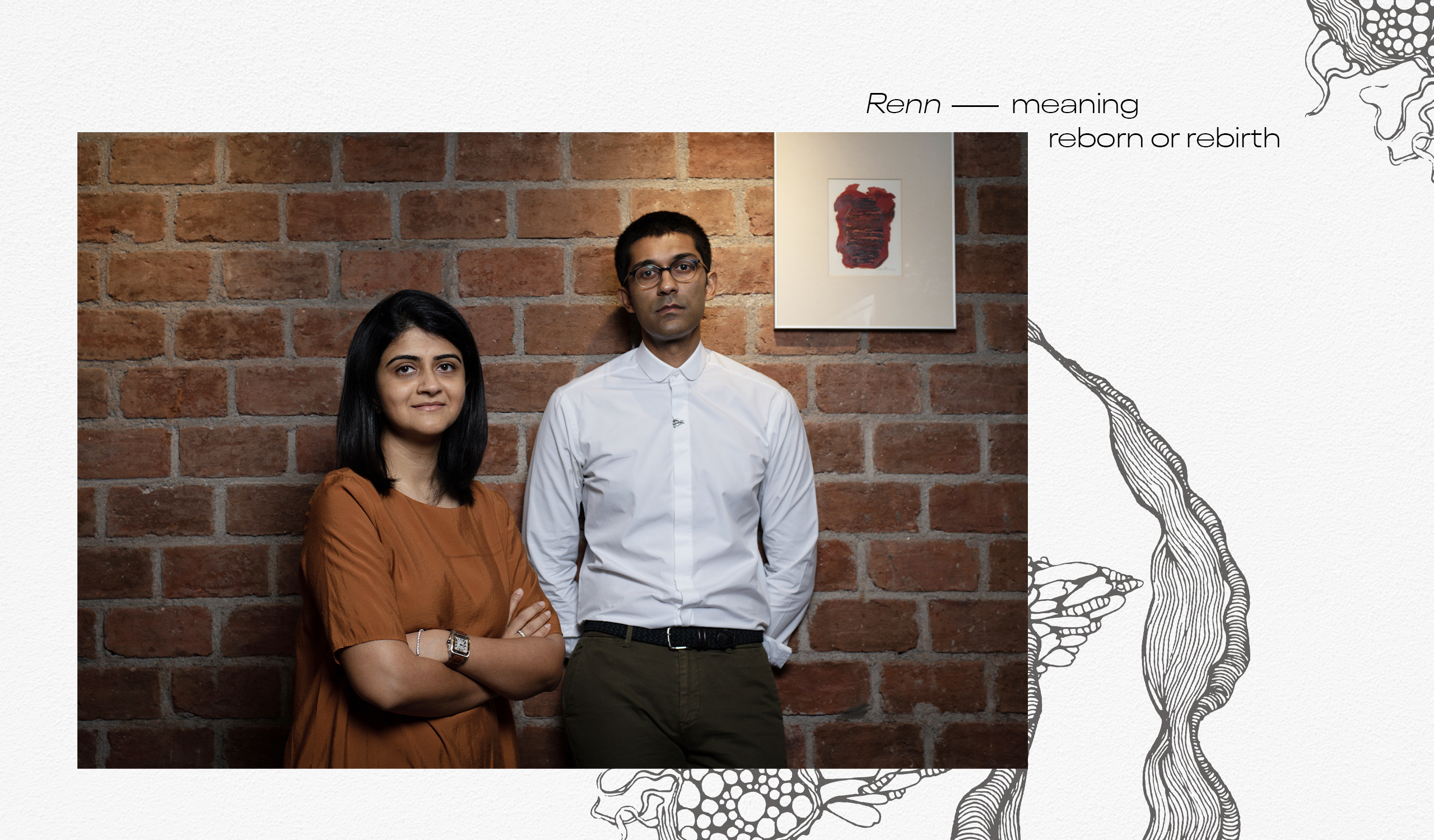
We’re currently in an age where the concept of ugly beautiful dominates the creative discourse. This idea sets ugliness up as a quality that is not opposed to beauty, but an extension of it. It encourages the viewer to challenge and expand their inherent notions and perceptions of beauty by celebrating objects that, at first look, might seem inelegant or asymmetric to the eye. In fashion, the oversized sneaker is the poster child of ugly cool, while in the culinary world, dishes that look sloppy and unappetizing but are transcendent on the tongue are termed ugly delicious.
On the Indian jewellery landscape, no one embodies this philosophy better than Studio Renn, an emerging jewellery house run by Roshni and Rahul Jhaveri, a Mumbai-based husband and wife team. That’s not to say that Studio Renn’s jewellery is ugly—it’s better described as atypical or cerebral. Especially when compared to the more traditional offerings on the Indian jewellery scene, Studio Renn’s pieces are more likely to be inspired by their founders’ conversations and collaborations with artists, architects and poets, as opposed to being inspired by nature or more conventional objects. “One of the first designs I made was of two rings: the idea was one is alive and the other is dead. The second is blackened, and it appears that some natural diamonds have fallen off. The thought behind it was atrophy, and depicting the process of decay. The rotten ring for us is the most beautiful one,” says Rahul.
Their maverick-like approach has earned them a reputation of being a fierce young voice in the jewellery universe.
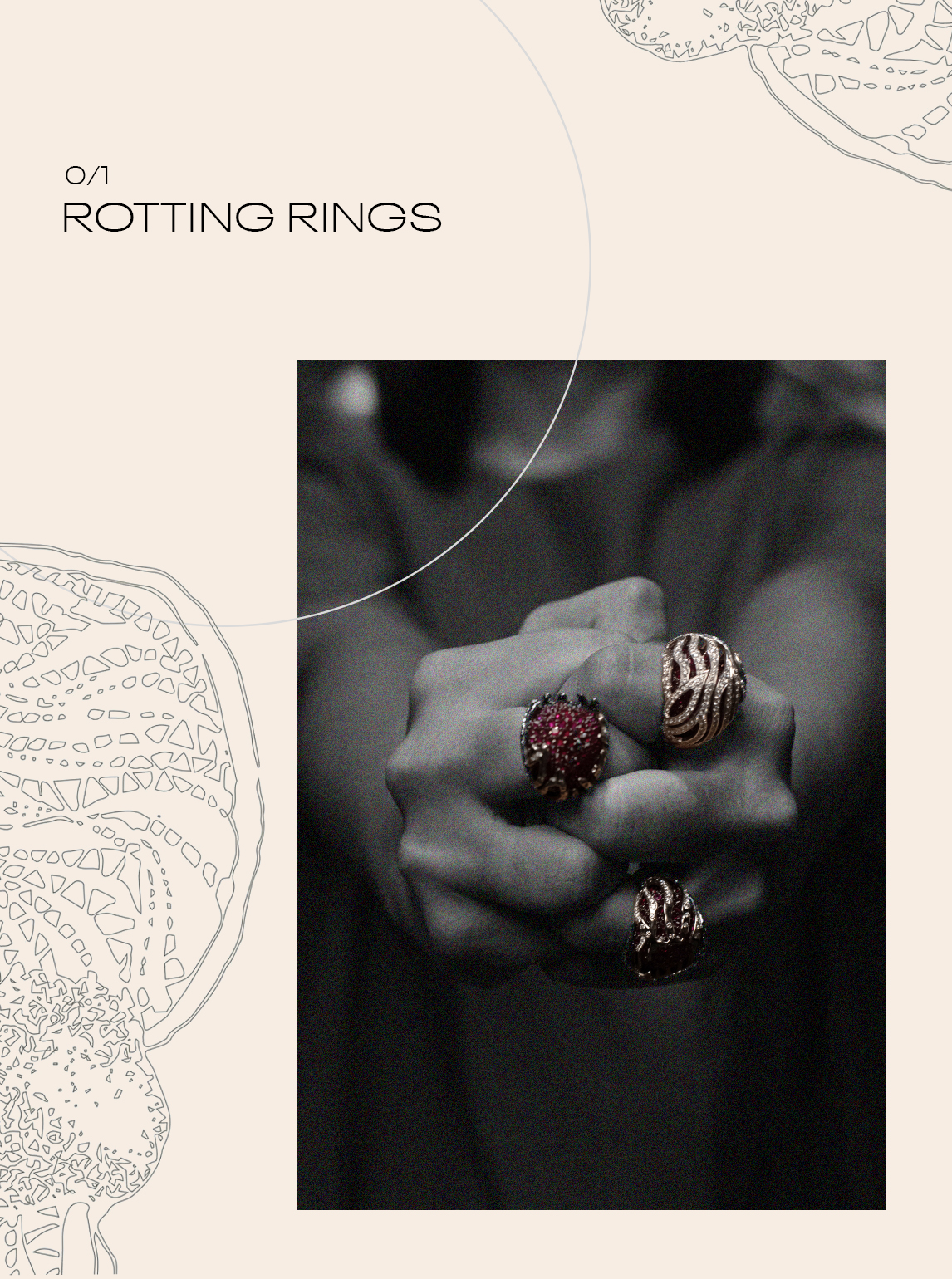
You can’t put a price on love, but at the same time, you need to factor in all the information you know about the gem. Though Rahul’s background in natural diamond polishing and cutting was closer to the jewellery world than Roshni’s who was a strategy and marketing consultant before they created the studio in 2018, both the Jhaveris are unstudied in jewellery-making. Studio Renn began when Rahul started designing pieces for family and friends in addition to his natural diamond business, and as that network grew, the duo realized designing fed their creative fire and was infinitely more gratifying. Their ardent love of design in all forms has made their work a touchstone for conceptual pieces that not only serve as ornamentation, but also take the wearer on a personal journey of exploration and imagination that’s often hidden from an onlooker.
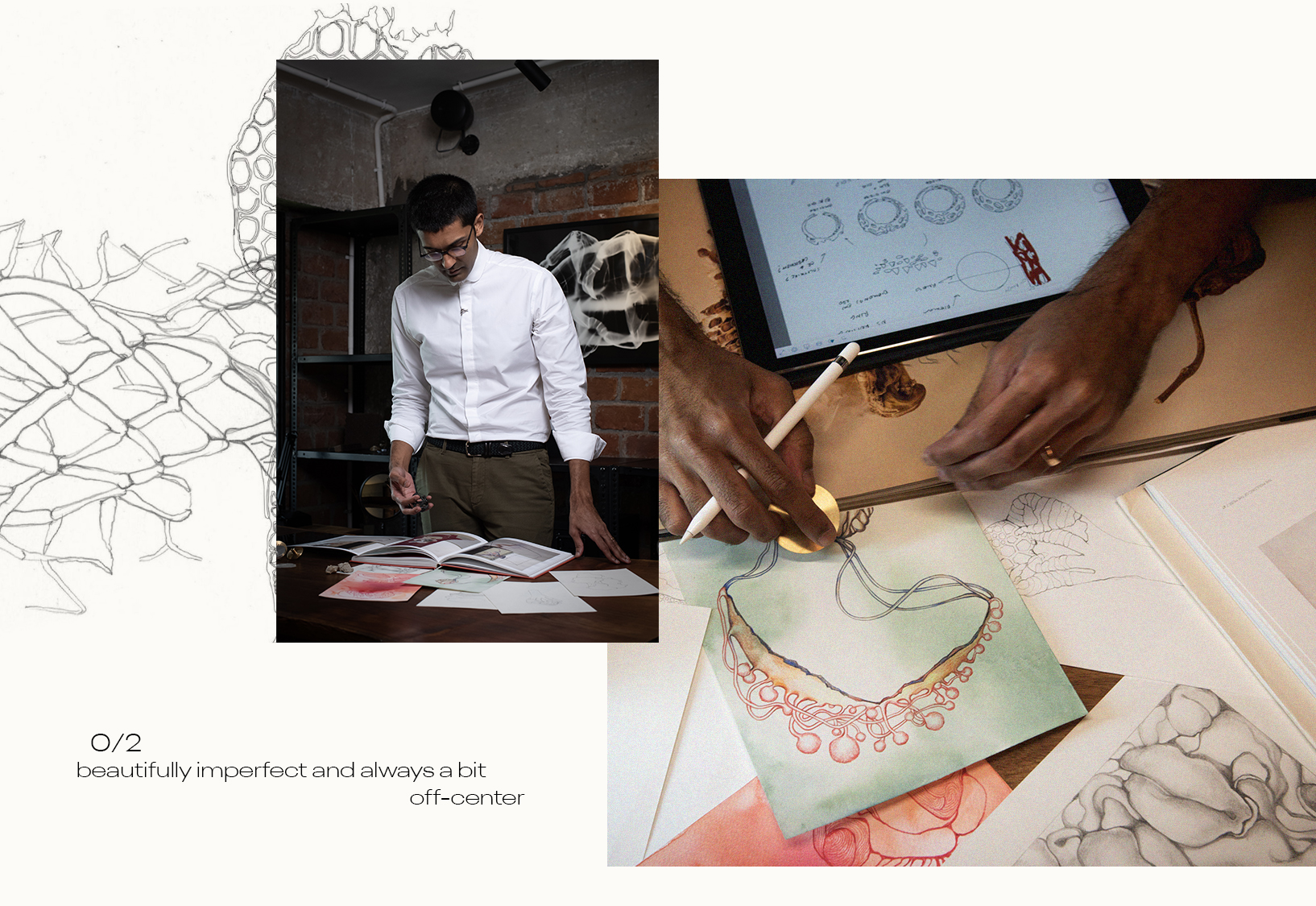
Rahul fulfils most of the brand’s creative duties while Roshni contributes to the smooth running of all other aspects of the brand’s business, including finances and marketing. “Not coming from design backgrounds has been a big positive not only for us, but also for our ideation team—the artists, poets and architects that we pulled into these conversations were all coming from a sphere outside jewellery, so they didn’t subconsciously work within the limitations of what a material allows them to do,” says Roshni. In the past, Studio Renn’s collaborated with visual artist Prashant Salvi, Material Immaterial (MiM) Studio, an architectural firm, and enamellist Ankit Malpani.
Their unschooled, freestyle approach did create its own challenges, such as pieces sometimes becoming too heavy for wear. That’s where Roshni steps out of her role on the business side and adds her creative fingerprint to the work. “I’m the voice of reason. I weigh in on the practicality, wearability, and other factors, such as how many times each piece can be repeated. I tell the team if it’s too heavy, going to get stuck in my hair, or pull a thread out of my new sweater.”
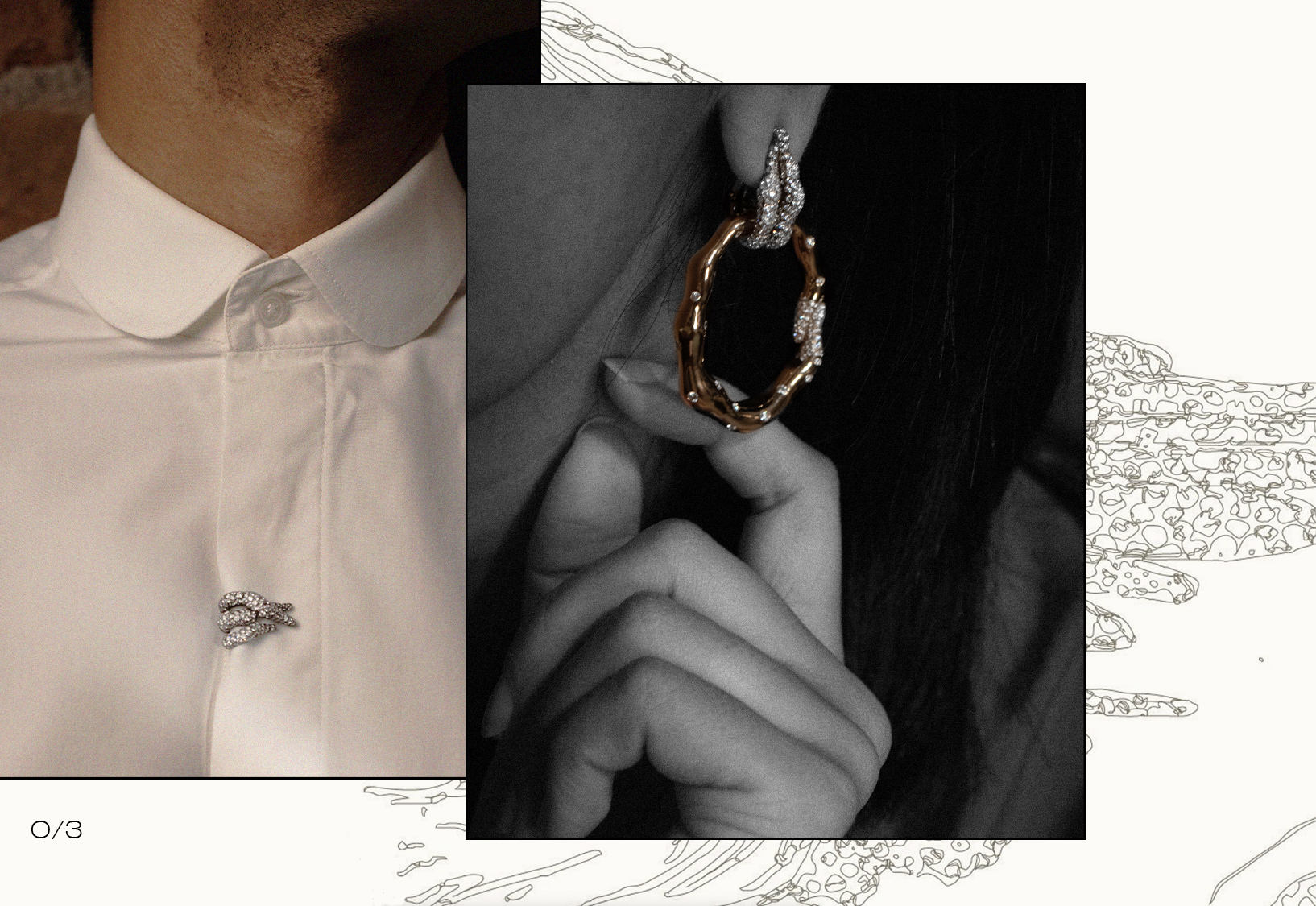
Their work experiments with form and asymmetry, and they create novel textures by using unconventional materials, or by manipulating conventional jewellery-making materials in unique ways. Pavé diamonds are a constant in their pieces, but the duo say that setting wasn’t a conscious decision—it was the means to achieve an undulating effect and the idea of movement in the jewellery. “We also end up juxtaposing natural diamonds with materials which are more common, such as concrete,” Rahul says.
Their most intriguing experiments are in those pieces in which they have inverted natural diamonds, or hidden the stones so only the reflection is visible. “The Puffball series is an exploration of texture and volume. We inverted all the diamonds to create an interesting texture. It gives off another kind of radiance,” says Rahul, referring to the technique of setting natural diamonds spiky side up, a method devised by Munich jeweller Hemmerle, and popularized by jewellery designers such as JAR. One of Roshni’s favourites, the Orange Peel series, captures the reflections of hidden natural diamonds in a ring and earrings. “The liquid-like feeling you get when you see the pieces are actually reflections of diamonds on gold,” she says of the pieces she wears daily.
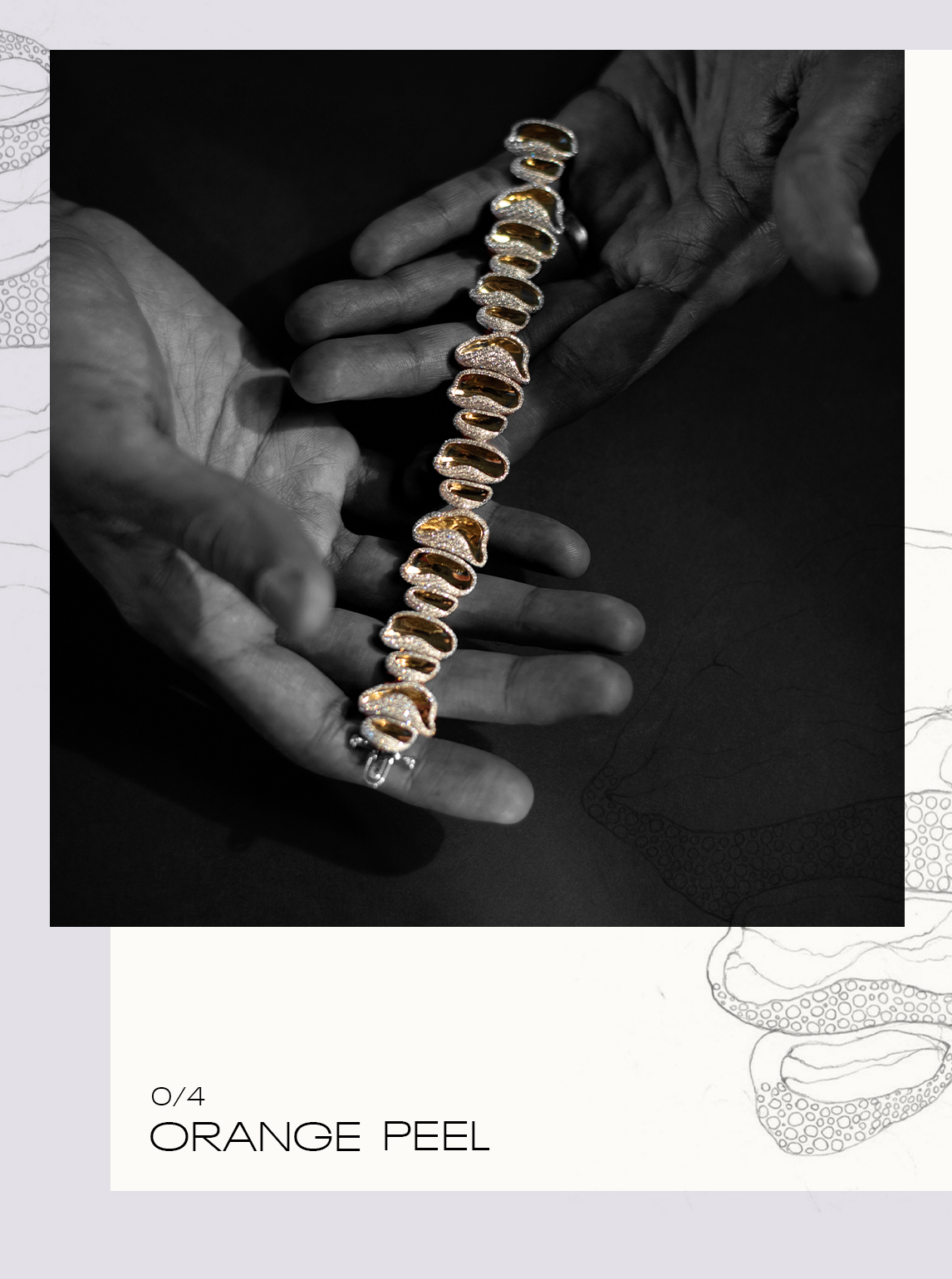
In another parallel to the world of high fashion, gender fluidity is an inbuilt, unspoken trademark of their work. “We do not assign a particular work as meant for men or women. It’s all about relating to a work, having it resonate with you, and you make it yours irrespective of your gender or age. Good design transcends all such criteria,” says Roshni. Gender fluid jewellery is one of the major trends forecast in Natural Diamond Council India’s first-ever trend report, which highlights the key trends in natural diamond jewellery for 2021.
For the Jhaveris, their favourite pieces are the ones with the most emotional value. “Diamonds have been an important part of my professional and personal life, so for me, the engagement ring I designed for Roshni has a lot of significance. She’s collected a lot of jewellery after that, but that’s a piece that has become second skin to her, much like the wedding band that I wear. It’s part of us and a part of our identity,” he says.
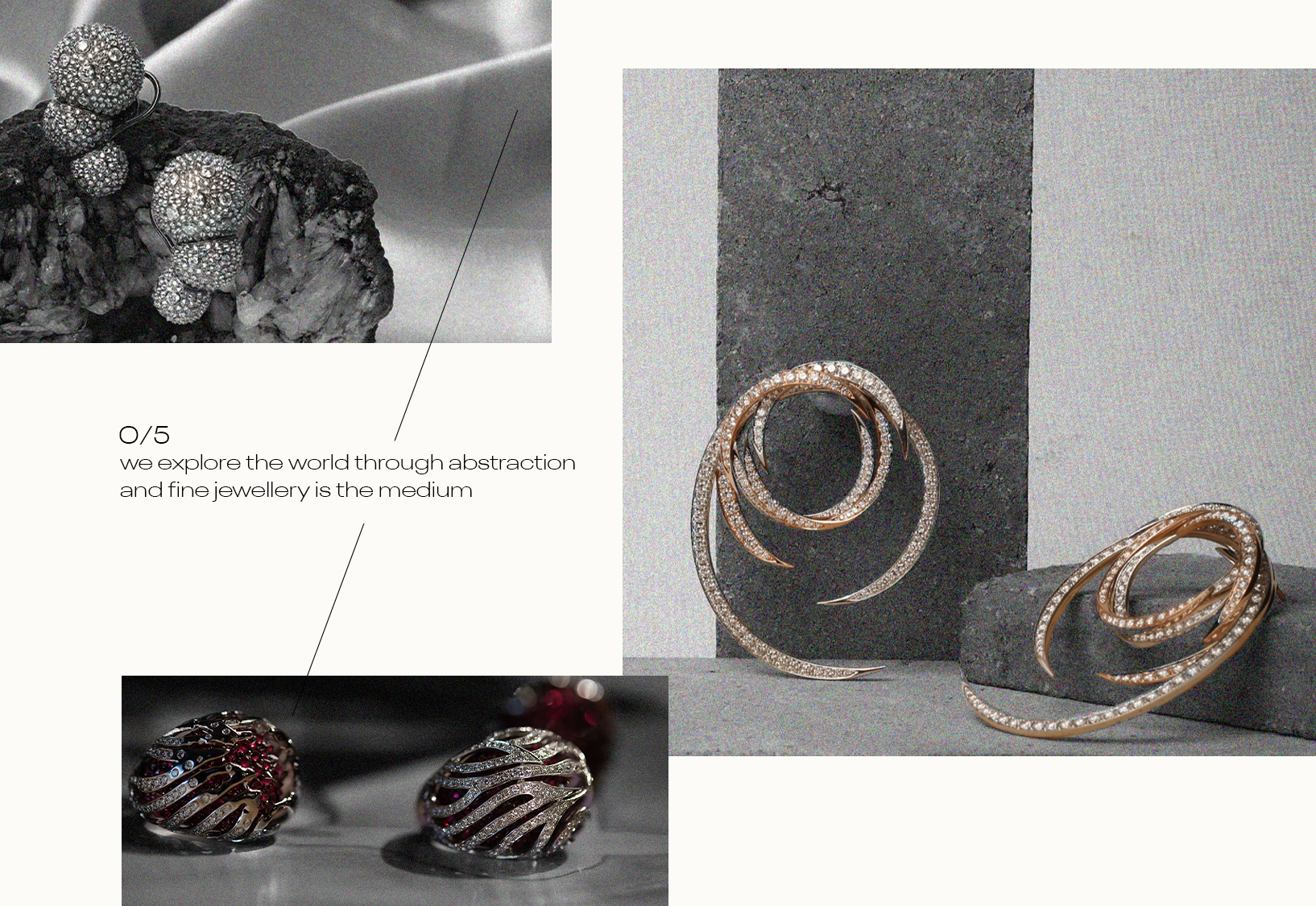
Their collectors, too, understand that a piece from Studio Renn is more than just raw materials coming together in exquisite craftsmanship to form a dazzling whole. It’s an evolving conversation and exploration between themselves and the pieces they’ve acquired from the designers. “We value the intangibles that jewellery has over the tangibles. It’s not only the gold, diamonds or the gemstones that make the work. It’s when all of it comes together that it’s worth more than the sum of its parts,” says Rahul. They believe that only when a work is collected, that its true value is ascertained and determined. “The emotional attachment and significance that a particular piece has to our collectors surpasses its monetary value. True value is determined once they wear it. Way too much jewellery is left in safes. We tell our collectors, ‘If you can’t imagine yourself wearing it all the time, don’t collect it.’
